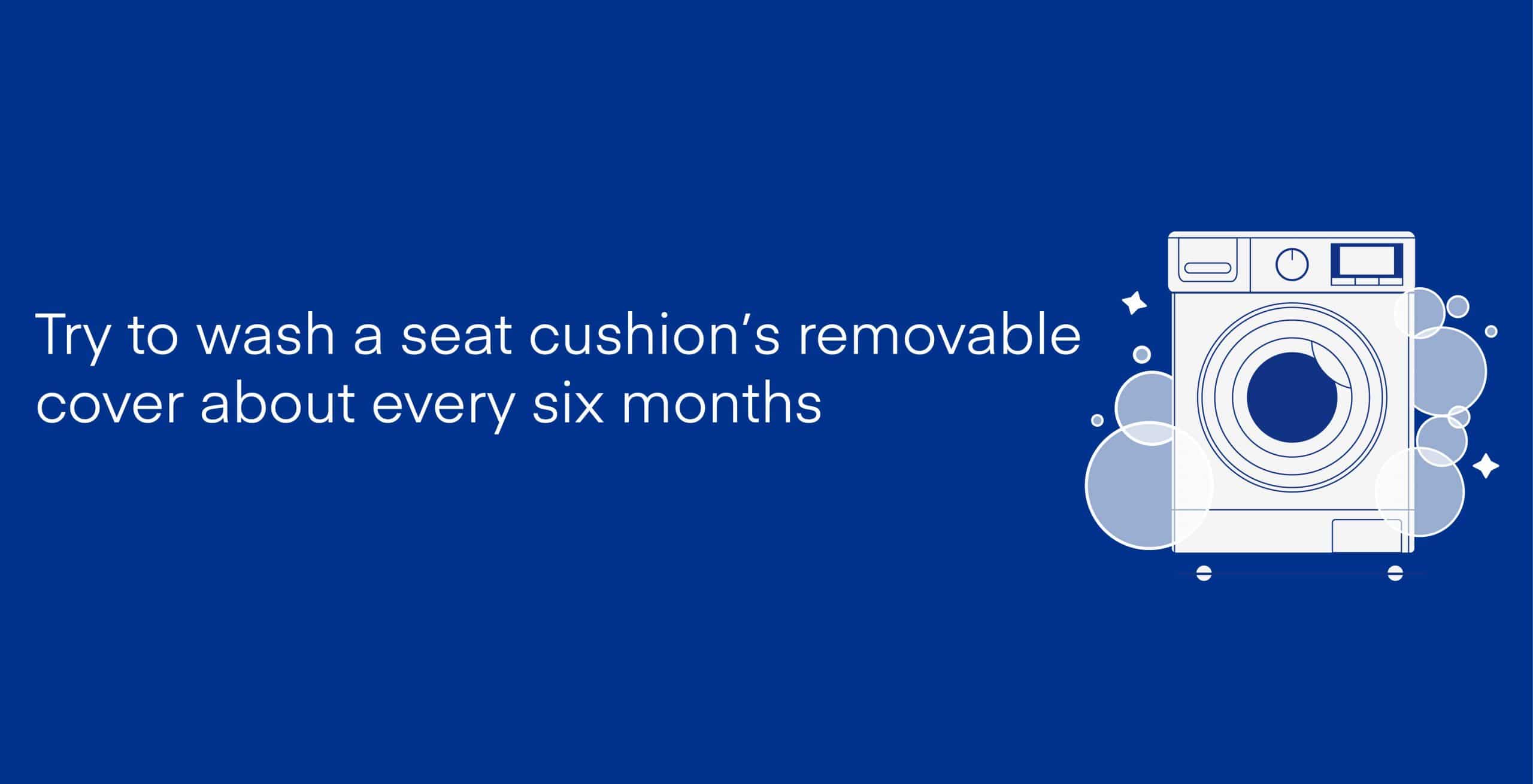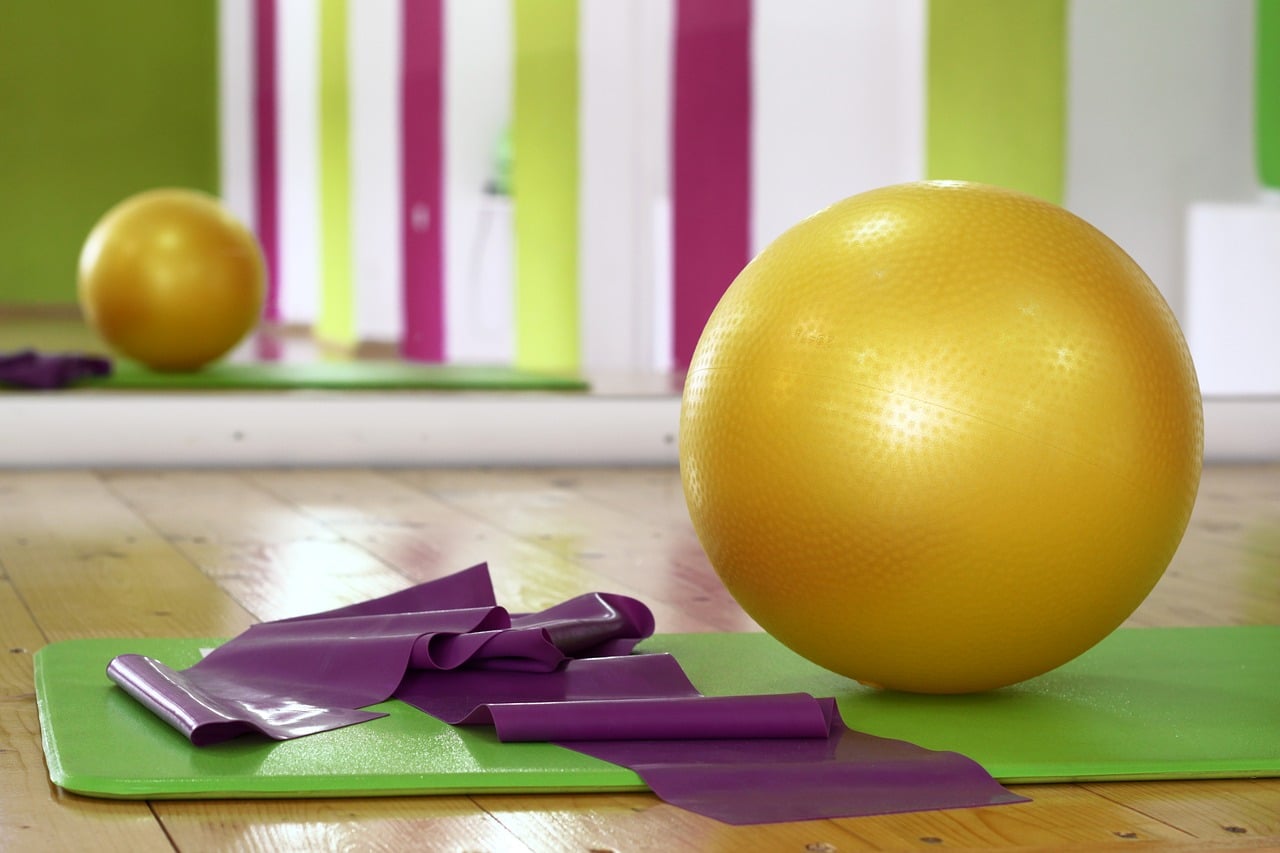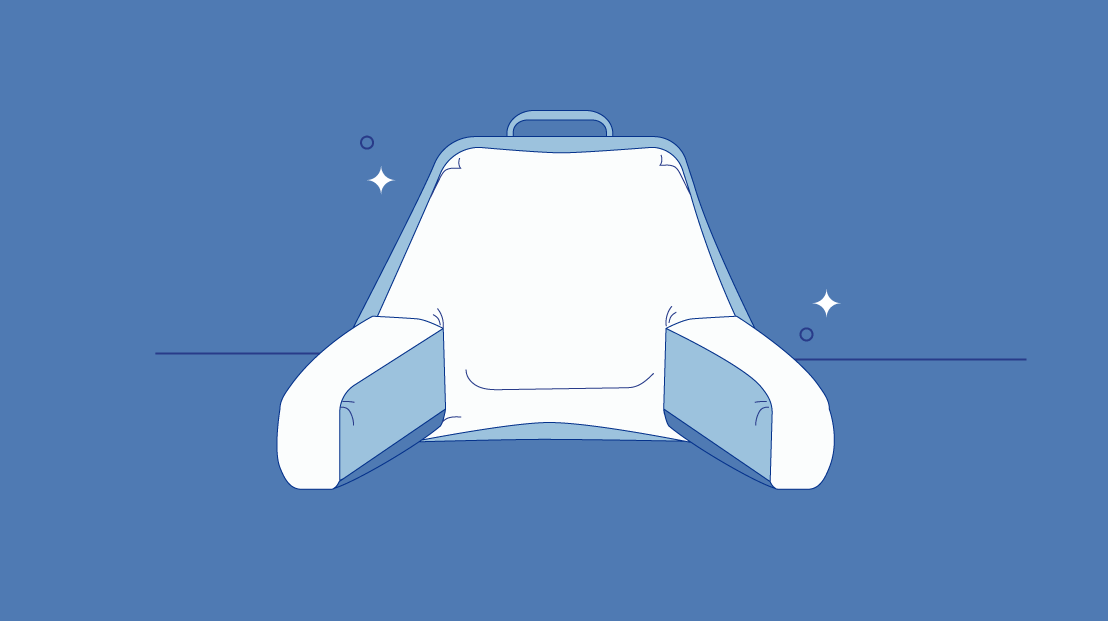Key Takeaways
- Why Back Pain Occurs: Back pain can be caused by various factors, including congenital skeletal abnormalities, degenerative conditions, spinal problems, sciatica, fibromyalgia, endometriosis, pregnancy, and tumors. It’s more common among overweight or elderly individuals and those with poor posture, little physical activity, stress, anxiety, or depression.
- How a Seat Cushion Helps: A seat cushion supports the body weight by distributing it evenly and may have an ergonomic design to relieve pressure on the coccyx and prevent tailbone pain. To maximize the benefits of a seat cushion, use it not only at your desk but also in various settings around the house.
- More to Reduce Back Pain: While seat cushions can improve back support and pressure relief, they should be used in conjunction with regular movement and stretches to reduce the risk of back pain. Walking is a good low-impact exercise for those with back pain, as it can help strengthen muscles, improve flexibility, posture, and weight management. Avoid slouching, bending forward, and lifting heavy objects.
Many of us spend the majority of our time at our jobs sitting down. Some people work from a desk, while others, such as bus and truck drivers, spend their shifts confined to a chair in a vehicle. Long hours of sitting on a hard surface often lead to a sore back from muscle strain and improper support.
You can reduce your chances of back pain by using a seat cushion designed to distribute your body weight and decrease pressure on your lower back.
Consider the Amerisleep Seat Cushion for Back Pain
Quick Guide: A 30-Second Summary
| Best Seat Cushion for Back Pain | Amerisleep Seat Cushion |
-
Price
$69
-
Warranty
1 Year
-
Thickness
2.25 Inches
-
Return Policy
100 Days
The Amerisleep Seat Cushion works well with car seats, park benches, and stadium chairs. It’s designed to provide all-day comfort.
- Removable cushion cover for easy cleaning
- Tapered edges promote healthy posture
- Foam fill responds to the body
- People seeking to relieve back pain
- People with a medical condition
- People who work a desk job
The Amerisleep Seat Cushion can transform any chair’s feel. You can use it with your office chair, a kitchen stool, or take it with you on the go.
While many seat cushions contain memory foam, we don’t use it in our seat cushion. That’s because memory foam is too conforming to be a truly supportive material. Even high-density memory foam is only so supportive. Instead, our seat cushion features a specially designed poly-foam for responsive support.
The benefits of this seat cushion come from its unique design that promotes ergonomic support and efficient productivity. The tapered edges along the cushion’s front make it easier to sit up straight, keeping you from slumping in your chair.
There are two foam layers inside the cushion, a comfort layer of contouring cushion and posture-correcting support foam. The surface features responsive yet soft support for your bottom, back, hips, and legs. No need to worry about permanent impressions from your body, though. Even after hours of use, the cushion is quick to regain its original shape.
Plus, the Amerisleep Seat Cushion is designed for easy cleaning. Simply unzip the machine-washable cover to take it off, then throw it in your washer with some mild detergent. The foam cushion can be spot-cleaned and freshened up with baking soda.
The Amerisleep Seat Cushion is $69 and comes with a 100-day trial period and a 1-year warranty. The cushion measures 18 inches by 15 inches and is 2.25 inches thick. Its lightweight design promotes easy transport.
Potential Causes of Back Pain
There are two types of back pain, acute and chronic. Acute back pain is short-term, lasting only a few days to a few weeks before clearing up. Lower back pain typically qualifies as acute. Chronic back pain lasts 12 weeks or longer.
Most back pain occurs in the lower back area. Causes of low back pain Verified Source National Library of Medicine (NIH) World’s largest medical library, making biomedical data and information more accessible. View source include:
- Congenital skeletal abnormalities like scoliosis, Verified Source National Library of Medicine (NIH) World’s largest medical library, making biomedical data and information more accessible. View source lordosis, Verified Source Medline Plus Online resource offered by the National Library of Medicine and part of the National Institutes of Health. View source kyphosis. Verified Source Medline Plus Online resource offered by the National Library of Medicine and part of the National Institutes of Health. View source
- Degenerative conditions such as arthritis, Verified Source National Library of Medicine (NIH) World’s largest medical library, making biomedical data and information more accessible. View source spondylosis, Verified Source Medline Plus Online resource offered by the National Library of Medicine and part of the National Institutes of Health. View source and disc degeneration.
- Spinal problems, such as sciatica, Verified Source Medline Plus Online resource offered by the National Library of Medicine and part of the National Institutes of Health. View source ruptured discs, spinal stenosis, Verified Source Medline Plus Online resource offered by the National Library of Medicine and part of the National Institutes of Health. View source spondylolisthesis, Verified Source Medline Plus Online resource offered by the National Library of Medicine and part of the National Institutes of Health. View source and osteoporosis. Verified Source National Library of Medicine (NIH) World’s largest medical library, making biomedical data and information more accessible. View source
- Piriformis syndrome, Verified Source National Library of Medicine (NIH) World’s largest medical library, making biomedical data and information more accessible. View source named for the piriformis muscle in the buttock area, can cause sciatic pain. Verified Source Harvard Health Blog run by Harvard Medical School offering in-depth guides to better health and articles on medical breakthroughs. View source
- Fibromyalgia, Verified Source National Library of Medicine (NIH) World’s largest medical library, making biomedical data and information more accessible. View source a chronic pain condition.
- Endometriosis, Verified Source National Library of Medicine (NIH) World’s largest medical library, making biomedical data and information more accessible. View source where uterine tissue builds up outside the uterus.
- Pregnancy Verified Source National Library of Medicine (NIH) World’s largest medical library, making biomedical data and information more accessible. View source
- Tumors Verified Source Harvard Health Blog run by Harvard Medical School offering in-depth guides to better health and articles on medical breakthroughs. View source
Back pain is also more common among overweight or elderly individuals and occurs more often in people who aren’t physically active. Sitting down all day for your job increases your chances of back pain, especially if you have poor posture or little to no back support. Stress, anxiety, and depression may also increase your chances of back pain.
Dr. Nayantara Santhi says, “A healthy back needs regular movement and exercise along with a proper seat cushion. Back pain contributes to poor sleep and in turn this can affect all aspects of our day to day activities, as sleep plays a critical role in our social, emotional and intellectual lives. Something as simple as having a good sitting posture during the day and a good sleeping position at night can help you maintain a healthy back.”
Signs of Serious Back Pain
While many cases of back pain can be treated at home, some are better off with professional medical treatment. Here are a few signs that you should seek immediate medical attention: Verified Source Harvard Health Blog run by Harvard Medical School offering in-depth guides to better health and articles on medical breakthroughs. View source
- A fever accompanies your back pain.
- Your groin area feels numb.
- You experience sudden weakness in your legs.
- You’re experiencing a loss of bladder or bowel control.
- You’re unable to sit or stand comfortably.
- Your pain worsens over time instead of improving.
Getting the Most Out of Your Seat Cushion
You don’t just have to limit the use of a seat cushion with your office or desk chair, as you may find a reason to use it elsewhere around the house. Make sitting at the kitchen table more comfortable or use it with a mattress for sitting up in bed.
If you’re a frequent traveler, avoid folding a seat cushion when you take it with you. Memory foam seat cushions can become damaged if they’re folded, creating unsupportive and uncomfortable creases.
If you can’t store your seat cushion in its full form and have to make it more compact to take with you, roll it up. Rolling a memory foam cushion reduces the chances of creases and lines that can affect the cushion’s comfort.

Try to wash a seat cushion’s removable cover about every six months. You don’t want to wash too often and wear out the material. If you want to freshen up the foam while the cover is being washed, sprinkle a light coating of baking soda across the top. Leave the baking soda alone for at least 30 minutes, then vacuum it off.
While seat cushions for office use can relieve pressure and prevent back pain, it’s still important to make sure you don’t spend the whole day in your chair. Try to move out of your chair every 30 minutes to reduce the consequences of long-term sitting. Verified Source Harvard Health Blog run by Harvard Medical School offering in-depth guides to better health and articles on medical breakthroughs. View source Do a few simple stretches, Verified Source Harvard Health Blog run by Harvard Medical School offering in-depth guides to better health and articles on medical breakthroughs. View source confer with your coworkers, get a drink of water, or just stand for a few minutes.
How Should I Sleep with Lower Back Pain?
Side sleepers should rest with their knees partially bent to reduce pressure on the back. They should make sure their bodies aren’t lifted too high or allowed to sink too far into their bed. The best mattresses for side sleeping have a soft yet supportive feel, keeping the spine from bowing too far into the bed. Side sleepers can also tuck a pillow between their legs to maintain hip alignment.
If you’re a back sleeper, you can prop your knees up with a wedge pillow or adjustable base. Raising your knees reduces the pressure on your lower back.
Avoid sleeping on your stomach when you’re experiencing back pain. Unless you have a firm mattress, stomach sleeping can misalign your spine and worsen back pain.
If back pain is a recurring issue, you may need to look into the best mattresses for back pain.
Frequently Asked Questions
Should you sit on a pillow?
No, you should not sit on a pillow. While the best pillows can help you sleep well, they do not provide the support you need for prolonged sitting. When you sit on a pillow or another overly cushioning surface, your buttocks sink in and your pelvis shifts out of its neutral alignment. This shift means your body has to work harder to remain upright.
Is sitting bad for lower back pain?
Sitting for long periods of time is not good when you’re suffering from back pain, though it’s often unavoidable when your job involves desk work. To best prevent back pain from sitting, allow yourself short breaks for standing and moving. Regular movement and physical activity Verified Source Harvard Health Blog run by Harvard Medical School offering in-depth guides to better health and articles on medical breakthroughs. View source can strengthen the back muscles.
A supportive seat cushion can also take the pressure off your back muscles when you’re sitting down.
Is walking good for lower back pain?
Yes, walking is a good low-impact exercise when you’re suffering from back pain. The simple aerobic exercise can decrease your chances of developing back pain without aggravating your back muscles. Walking also helps strengthen your flexibility, improves your posture, and manages your weight.
What should you not do with lower back pain?
If you’re experiencing lower back pain, avoid slouching when you’re sitting. Poor sitting posture is a common cause of back pain.
You should also avoid bending forward and lifting heavy objects. However, you shouldn’t stay away from simple back exercises that can strengthen your core muscles. Finally, if your back pain lasts longer than a couple of weeks, you should reach out to a doctor.
How does a chair cushion support your body weight?
A good seat cushion is often structured to buckle under your body’s heavier parts, absorbing your body weight for even distribution. Many cushions also have an ergonomic design to ease pressure on the coccyx, preventing tailbone pain.
Seat cushions are often 18 to 24 inches wide to accommodate a person’s bottom, regardless of their body type.
Did You Find A Seat Cushion for Back Pain?
Seat cushions can increase the back support and pressure relief a chair offers, allowing you to get up more comfortably after a long day of work. A high-quality seat cushion conforms to heavier parts of your bottom and supports back muscles. However, even the best seat cushions should be paired with regular movement and stretches to decrease the odds of back pain. Verified Source Harvard Health Blog run by Harvard Medical School offering in-depth guides to better health and articles on medical breakthroughs. View source
About the author
McKenzie Hyde is a Certified Sleep Science Coach and a full-time writer specializing in sleep health and the mattress industry. With a Master of Arts degree in literature and writing from Utah State University, McKenzie combines her passion for writing with her in-depth knowledge of sleep science. Her articles cover a wide range of topics, including best sleep practices for students, the consequences of sleep deprivation, and choosing the right mattress for back pain relief. McKenzie's dedication to delivering accurate and informative content makes her a valuable contributor to the field of sleep health.
View all posts






